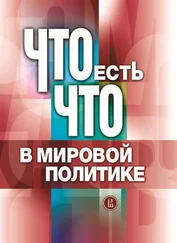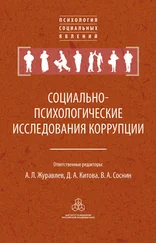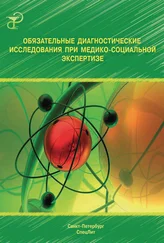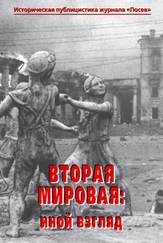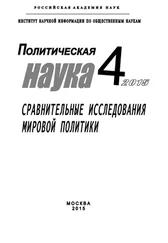Прежде всего: Brooke, The Dead Sea Scrolls and the New Testament (Minneapolis: Fortress, 2005).
Напр.: Fitzmyer, The Dead Sea Scrolls and Christian Origins (SDSSRL; Grand Rapids: Eerdmans, 2000).
Напр.: Evans, «Jesus and the Messianic Texts from Qumran», в кн.: Jesus and His Contemporaries: Comparative Studies (AGJU 25; Leiden: Brill, 1995), с. 83–154; idem, «Jesus and the Dead Sea Scrolls from Qumran Cave 4», в кн.: Eschatology, Messianism, and the Dead Sea Scrolls (ed. C. Evans and P. W. Flint; SDSSRL; Grand Rapids: Eerdmans, 1997), с. 91–100; idem, «Jesus and the Dead Sea Scrolls», в кн.: The Dead Sea Scrolls after Fifty Years (ed. P. W. Flint and J. C. VanderKam; 2 vols.; Leiden: Brill, 1998–1999), 2:573–598; idem, «Jesus, John, and the Dead Sea Scrolls: Assessing Typologies of Restoration», в кн.: Christian Beginnings and the Dead Sea Scrolls (ed. J. J. Collins and Evans; ASBT; Grand Rapids: Baker Academic, 2006), с. 45–62.
Lichtenberger, Studien zum Menschenbild in den Texten der Qumrangemeinde (SUNT 15; Göttingen: Vandenhoeck & Ruprecht, 1980); idem, «The Dead Sea Scrolls and John the Baptist: Reflections on Josephus’ Account and John the Baptist», в кн.: The Dead Sea Scrolls: Forty Years of Research (ed. D. Dimant and U. Rappaport; STDJ 10; Leiden: Brill, 1992), с. 340–346; idem, «The Understanding of the Torah in the Judaism of Paul’s Day: A Sketch», в кн.: Paul and the Mosaic Law (ed. J. D. G. Dunn; Grand Rapids: Eerdmans, 2001), с. 7–24.
Kuhn, Enderwartung und gegenwärtiges Heil: Untersuchungen zu den Gemeindeliedern von Qumran mit einem Anhang über Eschatologie und Gegenwart in der Verkündigung Jesu (SUNT 4; Göttingen: Vandenhoeck & Ruprecht, 1966); idem, «Das Liebesgebot Jesu als Thora und als Evangelium: Zur Feindesliebe und zur christlichen und jüdischen Auslegung der Bergpredigt», в кн.: Vom Urchristentum zu Jesus: Für Joachim Gnilka (ed. H. Frankemölle and K. Kertelge; Freiburg: Herder, 1989), с. 194–230; idem, «Qumran Texts and the Historical Jesus: Parallels in Contrast», в кн.: The Dead Sea Scrolls Fifty Years after Their Discovery: Proceedings of the Jerusalem Congress, July 20–25, 1997 (ed. L. H. Schiffman, E. Tov, and J. C. VanderKam; Jerusalem: Israel Exploration Society and Shrine of the Book, 2000), с. 573–580.
Frey, «Die Bedeutung Der Qumranfunde für das Verständnis des Neuen Testaments», в кн.: Qumran: Die Schriftrollen vom Toten Meer (ed. M. Fieger, K. Schmid, and P. Schwagmeier; NTOA 47; Göttingen: Vandenhoeck & Ruprecht, 2001), с. 129–208; idem, «Das vierte Evangelium auf dem Hingergrund der älteren Evangelientradition: Zum Problem: Johannes und die Synoptiker», в кн.: Das Johannesevangelium – Mitte oder Rand des Kanons? Neue Standortbestimmungen (ed. T. Söding; QD 203; Freiburg: Herder, 2003), с. 60–118; idem, «The Impact of the Dead Sea Scrolls on New Testament Interpretation: Proposals, Problems, and Further Perspectives», в кн.: Scrolls and Christian Origins , ed. Charlesworth, с. 407–461.
Подробнее о нем см. ниже, в разделе «Мессия-пророк».
Хотя достоверных свидетельств связи Иоанна Крестителя с Кумранской общиной у нас нет, некоторые исследователи полагают, что он контактировал с ессеями или даже был с ними связан. Подробнее об этом см.: VanderKam and Flint, Meaning , с. 330–332.
ET: Flint, «Jesus and the Dead Sea Scrolls», в кн.: The Historical Jesus in Context (ed. A.-J. Levine, D. Allison Jr., and J. D. Crossan; PRR; Princeton: Princeton University Press, 2006), с. 110–131, особ. с. 117. Ср.: Burrows, Trever, and Brownlee, Dead Sea Scrolls of St. Mark’s Monastery , pl. 8. В серии DJD издания этих свитков нет. См. также: James H. Charlesworth et al., eds., The Dead Sea Scrolls: Hebrew, Aramaic, and Greek Texts with English Translations , vol. 1: Rule of the Community and Related Documents (PTSDSSP 1; Louisville: Westminster John Knox, 1994), с. 34–37.
Как в переводе RSV (и NRSV): «Глас слышен: в пустыне приготовьте путь Господу, прямой сделайте в пустыне дорогу Богу нашему».
Источник перевода: Flint, «Jesus and Dead Sea Scrolls», с. 114. Ср. тот же текст в кн.: Burrows et al., Dead Sea Scrolls , с. 146–147; PTSDSSP 1:46–49.
Перевод 2:11–22 и обсуждение текста: Flint, «Jesus and Dead Sea Scrolls», с. 114–115.
Перевод и обсуждение текстов генизы, версия А 12:22–13:7 и генизы, версия Б 19:7–13, 33–35; 20:1–3: там же, с. 116–117.
Перевод и обсуждение текста (здесь немного адаптированного): там же, с. 118–119. Ср.: DJD 25.10; PTSDSSP 7.
Однако отметим: Илия воскрешает сына вдовы в 3 Цар 17:17–24.
Иисус «провозглашает Царство Божье и, исцеляя и изгоняя бесов, доказывает, что оно уже здесь; он притязает на то, что он – помазанник и, следовательно, вправе нести благую весть. 4Q521 дает серьезное подтверждение традиционному мнению, что Иисус действительно считал себя Мессией Израиля» (Evans, «Qumran Cave 4», с. 97).
J. J. Collins, The Scepter and the Star: The Messiahs of the Dead Sea Scrolls and Other Ancient Literature (ABRL; New York: Doubleday, 1995), с. 117–122, 205–206.
4Q521 восходит к Пс 145:7–8: «Господь разрешает узников, Господь отверзает очи слепым, Господь восставляет согбенных, Господь любит праведных».
Dead Sea Scrolls: Preliminary Survey , с. 99–100.
C. Bell, Ritual: Perspectives and Dimensions (New York: Oxford University Press, 1997), с. 102–108.
См.: Лев 23:2, 4, 37, 44; Ездр 3:5; 2 Пар 2:4, ср.: Иез 44:24. Все переводы в этой статье авторские, за исключением особо оговоренных случаев.
Перечисленные выше английские термины я использую в этой статье взаимозаменяемо для обозначения всех ежегодных иудейских моадим, не делая различия между их разновидностями (например, хаг и другими).
Читать дальше
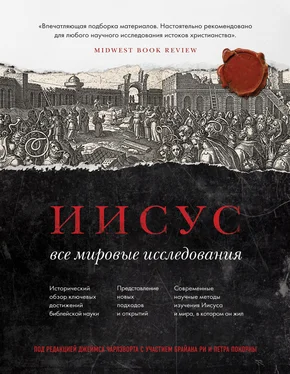
![Коллектив авторов - Что мы думаем о машинах, которые думают [Ведущие мировые ученые об искусственном интеллекте]](/books/31211/kollektiv-avtorov-chto-my-dumaem-o-mashinah-kotorye-thumb.webp)
